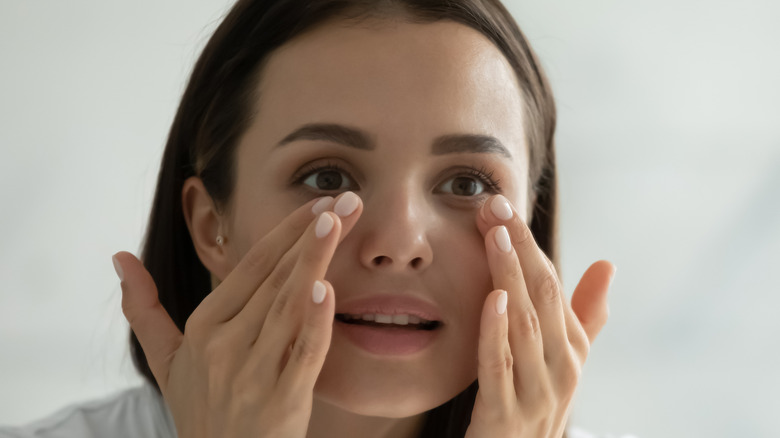What Are Eye Boogers Made Of?
The human body is a wondrous thing. As a species, we can survive in a variety of climates and weather conditions; we can safely consume a wide range of animal, plant, and fungal matter; and when we're sick or injured, the human body often does a good-enough job of healing itself without medicine. Unfortunately, the systems that keep the human body functioning can also be kind of gross.
No one gets over a common cold without producing an impressive amount of snot and mucus, and every parent is intimately familiar with what happens to a child's digestive system when they consume something their tummies don't agree with. Even our eyes, whether we're sick or well, produce a gritty goo that collects in our eyelashes and the corners of our eyelids. They're often known as "eye boogers," due to their similarities with the stuff that oozes from the nose, but they're not the same thing (via Healthline).
Blame it on the rheum
Among the myriad of fluids produced by the human body is a substance called rheum. As McGill University notes, it's basically mucus, which is also secreted from the nose, although in the case of the eyes it's excreted from the cornea and/or conjunctiva. According to Mental Floss, rheum also contains various bits of skin oils, dead cells, and dust. Ordinarily, as you blink throughout the day, rheum is driven to the nasolacrimal duct (or tear duct), and then out of your eyes. However, during sleep, we don't blink, which allows rheum to build up and leave a thick and sometimes-crunchy goo that, in extreme cases, can make it difficult to open the eyes.
For most people, eye boogers are an inconvenience at worst, but certain medical conditions, such as conjunctivitis or blocked tear ducts, create excessive buildups of rheum (via Healthline).

